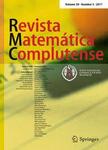版权所有:内蒙古大学图书馆 技术提供:维普资讯• 智图
内蒙古自治区呼和浩特市赛罕区大学西街235号 邮编: 010021

作者机构:Univ Wollongong Wollongong NSW Australia Univ Missouri Columbia MO USA
出 版 物:《REVISTA MATEMATICA COMPLUTENSE》 (孔普卢顿数学杂志)
年 卷 期:2020年第33卷第3期
页 面:643-660页
核心收录:
学科分类:07[理学] 0701[理学-数学] 070101[理学-基础数学]
基 金:ARC [DP190100180] NSF [SES-1853096, DMS-1811745]
主 题:Change-of-support Uncertainty quantification Space-time interaction Hierarchical statistical model Deep neural models Stochastic PDE
摘 要:The space-time cube is not a cube of course, but the idea of one is useful. Its base is a spatial domain, D-t, and the cube is traced out by a process of spatial domains, {D-t : t = 0}. Now fill the cube with a spatio-temporal stochastic process {Y-t (s) : s is an element of D-t, t = 0}. Assume that {D-t} is fixed and known (but clearly it too could be stochastic). Slicing the cube laterally for a fixed t(0) generates a spatial stochastic process {Y-t0 (s) : s is an element of D-t0}. Slicing the cube longitudinally for a fixed s(0) generates a temporal process {Y-t (s(0)) : t = 0} that, after dicing, yields a time series, {Y-0(s(0)), Y-1(s(0)),...}. These are the main highways that traverse the cube but other, less-traveled paths, can be taken. In this paper, we discuss spatio-temporal data and processes whose domain is the space-time cube, and we incorporate them into hierarchical statistical models for spatio-temporal data.